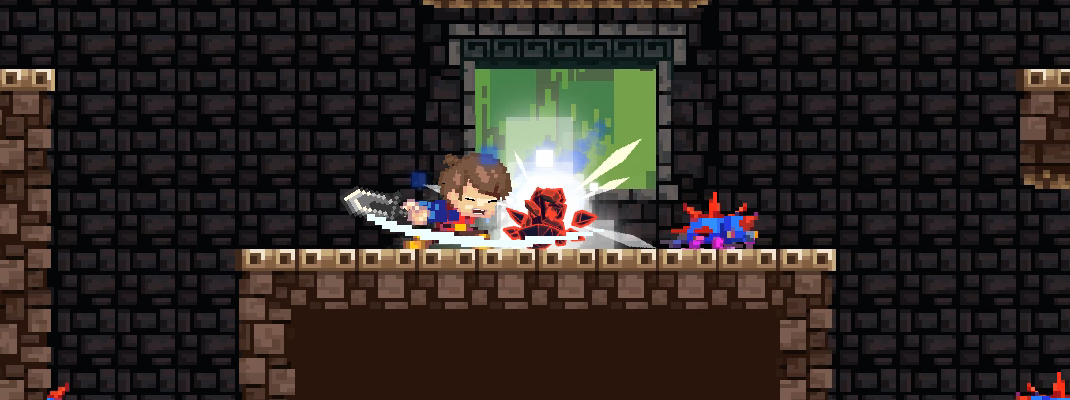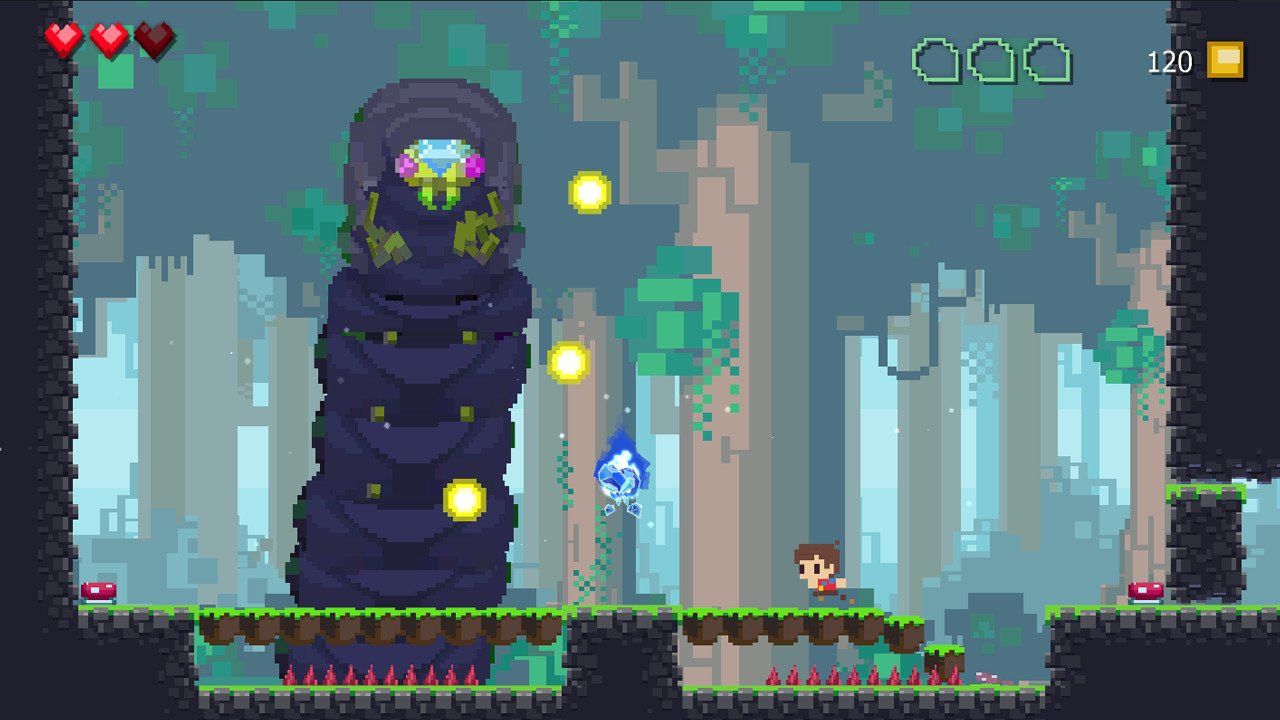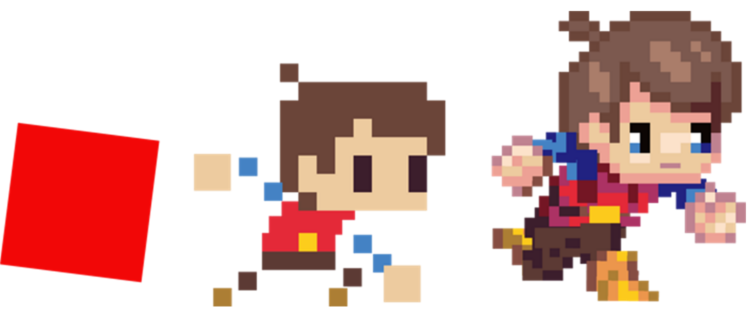Indie developer Tic Toc Games launched its long awaited platformer Adventures of Pip last week on Wii U and Steam. Hardcore Gamer had the privilege to sit down and chat with the studio's own Shereef Morse, Marc Gomez and Cathy Camacho to hear about their experiences Kickstarting and developing the game, along with their inspirations for the charming platformer.
[Hardcore Gamer] For those unfamiliar with Adventures of Pip, can you describe the game for them?
Marc: This is the pitch I always give: It's a story about a hero that started as a single pixel, and when you defeat enemies you absorb the pixels into you, and when you do that you evolve into another form that has more abilities. So you gain abilities and lose abilities based all on how you want to approach to gameplay.
Shereef: Yeah that's it. (laughs)
Marc: (Laughs) It's been awhile.
Shereef: Marc's out of practice, he's gotta get ready for PAX Prime. This is perfect. (To Cathy) You wanna give your description of Adventures of Pip?
Cathy: No. (Everyone laughs)
Shereef: It's really funny because there's so many different evolutions of the story of Adventures of Pip, because you could go back to Marc's origin when he was a background designer over at Wayforward, basically pixel-pushing for all the different backgrounds for Game Boy Color, and then watching his evolution going from Game Boy Color, Game Boy Advance all the way to 3DS. And then he came to me and he said, "I really want to make a game that kind of works with all the different evolutions of art that I experienced in development". And I was like ,"Alright well what's the game?", and he gave me this one page treatment about Pip, which back then was just kind of an idea of getting the different resolutions to have gameplay associated with each evolution. So it would almost be like platforming through the generations of game consoles, right? But as we got into developing it, the game changed so many times that it became about, you know, "the evolution can't just be a novelty that's tacked on. Each evolution has to be meaningful and have all these different reasons to go backwards as well as forwards". So it became a game not about just evolution but about evolution and de-evolution.
Marc: The evolution is very much tied to the storyline, but at the same time as Shereef was saying we kept going back and forth because we wanted to make sure the gameplay was intuitive to the player.
Shereef: So that kind of created this system and stuff, and evolution of different characters living in the same kingdom, so you had high-rez and low-rez characters all living together and then this antagonist comes in and de-rezzes everybody down to one pixel. But since you were always one pixel, as Pip--
Marc: Yeah.
Shereef: You wanna take over now? (laughs)
Marc: The important part to the story is that you learn as you play through that it doesn't matter if you're high-rez or low-rez, you're always important. That's the kind of thing we want to deliver through the story, through the gameplay, and that's the whole idea behind the kingdom that it came from. There was all this judgment based on your resolution value; that's kind of the basis behind it.
Shereef: Yeah so Pip is basically a game where you start off as a single pixel, the lowest of the low in the social hierarchy of our Pixelonia, and you have got to save a kingdom that's basically been de-rezzed down to one pixel, and along the way you gain the ability to evolve to an 8-bit and then a 16-bit hero. But you learn through your journey that being high-rez isn't what's important all the time, and that sometimes you'll need to be low resolution to complete the different puzzle platforming levels in the world. So that's kind of the long way of getting at a simple summary.
Marc: His first question. (Everyone laughs)
Thorough, I like it. So because Pip can evolve and devolve, and because there are so many different resolutions represented in the game, did you find it challenging to incorporate so many art styles in the one game?
Shereef: Oh wow, good question.
Marc: Yeah, I mean the character went through a whole bunch of evolutions in art styles. (laughs)
Shereef: You could go online and type in 'Adventures of Pip' and you can see like six different Pips.
Marc: People are like "I don't remember seeing that Pip", and it's like, "Yeah, he doesn't exist"(laughs). So I mean, we went through and we put eyes on everything, we made the single-block pixel a 3D block. The one that went through the most changes was probably the middle Pip, where we didn't know if we should go closer to being lower-rez or higher-rez, and in the end we settled on something, then Cathy was like "Redo it".
Cathy: He was bald!
Shereef: You know what's awesome is Cathy ended up taking all the different Marios from the different games and organized them from lower-resolution to higher-resolution, and you know it looks like the same character throughout. Cuz like, with no hair it was kinda--
Marc: I was already kinda settle on it, you know like, "This is good enough", then Cathy was like, "Just make it like that Mario". And I was like "Okay, fine, let's give it a shot", and it was better. (Cathy laughs triumphantly)
Shereef: But to answer your question, it's true; like, you have lower-rez backgrounds with a higher-rez character sometimes, and kinda crazy marriages and continuity between those styles. I mean a lot of it is linked by the heads-up display, but at the same time it's kinda like making sure that it is a low-rez version of that same world. It's kinda hard to pull off.
Marc: The hardest part as far as blending in the backgrounds with the characters is when you're in earlier stages it is lower-resolution, but we tried to do it in a way that isn't pixel-perfect. It's something that we're trying to use a lot of photoshop on so that it looks low-rez but it's something that can blend nicely with higher-rez graphics as well. So there's a lot of playing around with all the different elements, to make sure they all blend together nicely.



